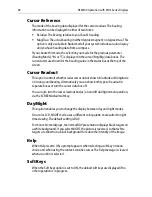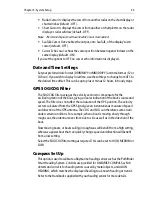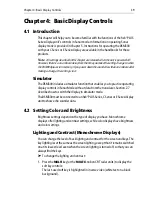
Chapter 3: System Setup
31
Bridge NMEA Heading
The display unit sends NMEA input data to the SeaTalk bus. The Bridge NMEA
Heading option can be used to prevent NMEA heading data being bridged onto
the SeaTalk bus.
For example, if you have a course computer connected on SeaTalk and NMEA, and
an active compass connected on NMEA (for MARPA), SeaTalk data overrides
NMEA data in the course computer.
You should therefore switch OFF the Bridge NMEA Heading option to ensure the
course computer receives the same NMEA heading input as the rest of the system.
NMEA-Out Set Up
This option lets you disable the transmission of specific NMEA sentences, which
may be necessary if you have other instruments sending the same data as your
sounder.
For example, if the DPT (depth) sentence is set ON but the sounder’s transducer is
designed to sense temperature and speed only, the depth value will be
transmitted as zero. If you also have an ST60 Depth instrument installed, there
may be confusion between the zero depth sent by the sounder and the actual
depth sent by the ST60. Turning OFF the DPT sentence disables the reading from
the sounder.
The factory default for all NMEA sentences is transmission ON. Disable the
sentence by selecting the OFF soft key.
The following table displays the available NMEA sentences and their meanings.
Table 3-2: NMEA Sentences
Sentence
Meaning
APB
Autopilot Sentence “B”
BWC
Bearing & Distance to Waypoint
BWR
Bearing & Distance to Waypoint – Rhumb Line
DBT
Depth Below Transducer (see note below)
DPT
Depth (see note below)
MTW
Water Temperature
RMB
Recommended Minimum Navigation Information
RSD
Radar System Data
















































